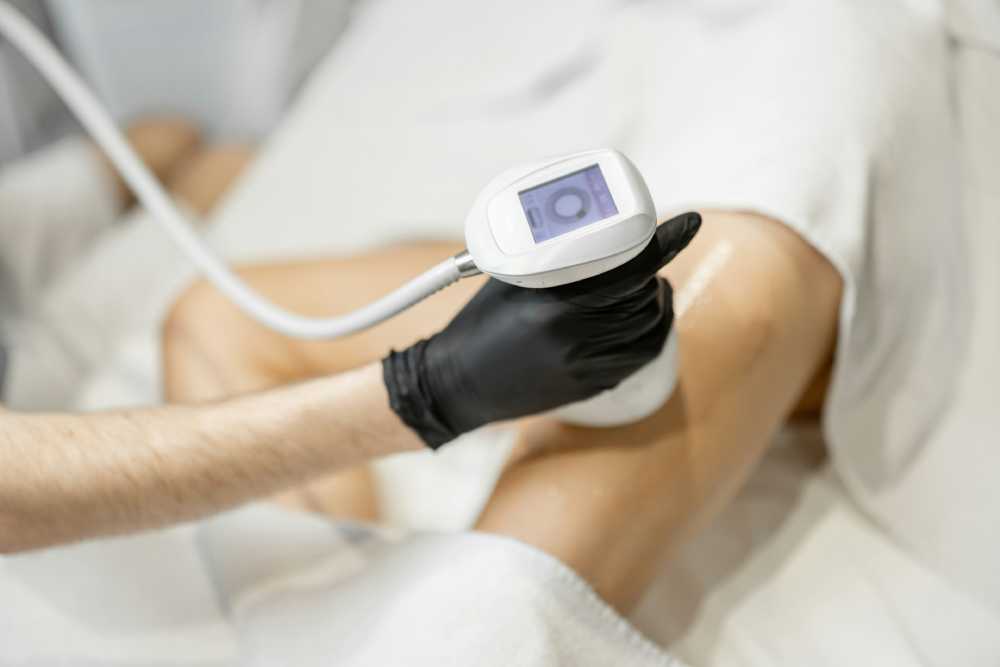The quest for a well-contoured physique has led to a surge in the popularity of non-invasive body contouring procedures. These technologies allow individuals to redefine their body silhouette without the risks and recovery time associated with invasive surgery.
One notable procedure that exemplifies the advancement of such technology is the use of non-invasive body-shaping treatment, which has created a new paradigm in the aesthetic medicine community for its dual benefits of reducing unwanted fat while simultaneously building muscle mass.
Contents
- 1 How Non-Invasive Body Contouring Works
- 2 EmSculpt Neo and its Place in Body Contouring
- 3 Patient Selection for Non-Invasive Procedures
- 4 Comparing Different Body Contouring Techniques
- 5 The Benefits of Non-Invasive Methods Over Surgery
- 6 Case Studies: Success Stories and Challenges
- 7 Post-Procedural Care and Maintenance
- 8 Futuristic Trends in Body Contouring
- 9 Expert Opinions and Medical Insights
How Non-Invasive Body Contouring Works
A Non-invasive body shaping treatment usually operates by administering energy that disrupts fat cells, prompting them to degrade and be metabolized by the body’s natural mechanisms.
Methods like cryolipolysis involve freezing fat cells, while others, such as radiofrequency, utilize heat to reduce fat. Some techniques also aim to enhance muscle tone, a vital aspect for patients who are not only looking to lose fat but also to improve their overall physique.
These treatments are carefully designed to ensure safety and comfort, allowing them to be performed in a clinic or spa without general anesthesia or extended recovery times.
EmSculpt Neo and its Place in Body Contouring
Among the various options for non-invasive body sculpting, EmSculpt Neo stands out. It combines radiofrequency heating and high-intensity focused electromagnetic energy to address fat and muscle tone simultaneously.
Such synergistic treatments are making waves in the industry because they resemble the outcomes of a rigorous workout regimen, achieved in a fraction of the time with no physical exertion. Healthline elucidates how this state-of-the-art technology is changing the narrative of body contouring by offering a non-surgical route to a chiseled physique, which is particularly intriguing to those seeking fitness-like results with minimal effort.
Patient Selection for Non-Invasive Procedures
Only some people are ideal candidates for non-invasive body contouring. The best candidates are usually those who are already actively managing their weight but have certain stubborn areas that resist diet and exercise.
These treatments are not obesity remedies but sculpting tools to fine-tune the body’s contour. Healthcare professionals must evaluate each person’s health history, body type, and cosmetic goals to determine the appropriateness of a procedure. An open and honest discussion about what can be achieved with these technologies is vital to patient satisfaction.
Comparing Different Body Contouring Techniques
Different techniques for body contouring are designed for various specific purposes. Cryolipolysis, for instance, is effective for reducing pockets of fat but may not significantly affect skin tightness or muscle tone. On the other hand, radiofrequency treatments can address skin laxity while reducing fat.
Ultrasound-based methods offer another approach, targeting fat cells with high-frequency sound waves. The comparative effectiveness of these methods can vary based on the targeted body area and the individual’s unique physical characteristics. Thus, a thorough assessment by a qualified specialist is crucial in choosing the most suitable method.
The Benefits of Non-Invasive Methods Over Surgery
Non-invasive body contouring offers a compelling alternative to surgical procedures such as liposuction. With minimal downtime, these treatments allow individuals to resume their daily activities immediately. There’s also a lower risk of complications like infections, scarring, or adverse reactions to anesthesia.
For many, the cost-effectiveness and ability to avoid surgical risks make non-invasive methods attractive. Moreover, the incremental and more natural-looking results can be preferable for those who seek subtle improvements over dramatic transformations.
Case Studies: Success Stories and Challenges
Real-world case studies offer invaluable insights into the actual outcomes of non-invasive body contouring procedures. Success stories often feature individuals who, after struggling with particular areas of fat despite a healthy lifestyle, find satisfaction and increased confidence post-treatment.
However, it’s crucial to recognize that not all procedures are equally effective for everyone. Maintaining long-term results requires a commitment to lifestyle changes and occasionally additional follow-up treatments for optimal outcomes. Detailed case studies help set realistic expectations and showcase the diverse possible results.
Post-Procedural Care and Maintenance
Specific measures can help sustain and enhance the results following a non-invasive body contouring procedure. A balanced diet, consistent exercise, and adequate hydration are fundamental.
Some treatments may necessitate specific post-procedural care, such as wearing compression garments or avoiding strenuous activity for a recommended period. Engagement in maintenance treatments might also be suggested to preserve the procedure’s effectiveness over time and to encourage further improvements in body contour.
Futuristic Trends in Body Contouring
A steady stream of innovations is paving the way to a new era of body contouring, with emerging treatments offering even more personalized and effective results. Advances are expected in the precision of fat-targeting, the speed of treatments, and recovery times, as well as the introduction of holistic procedures that address overall well-being in conjunction with aesthetics.
Professionals within dermatology and aesthetic medicine are continually monitoring these advancements, and their impact on future treatment protocols can be significant. The aesthetic industry anticipates a paradigm shift towards increasingly tailored and non-invasive options that address body contouring in novel ways. Modern Medicine’s Aesthetic Channel notes that such technological progress could make these popular treatments more accessible and desirable.
Expert Opinions and Medical Insights
The perspectives of medical professionals in dermatology and cosmetic surgery play a crucial role in shaping public perception and acceptance of non-invasive body contouring procedures. Doctors and researchers contribute expertise that helps patients understand these technologies’ science, potential benefits, and limitations.
Experts also provide advice on selecting suitable treatment options and maintaining results. With ongoing studies and clinical trials, the medical community’s insights ensure patients are well-informed and that their treatments are effective, safe, and well-suited to their needs and health profiles.



